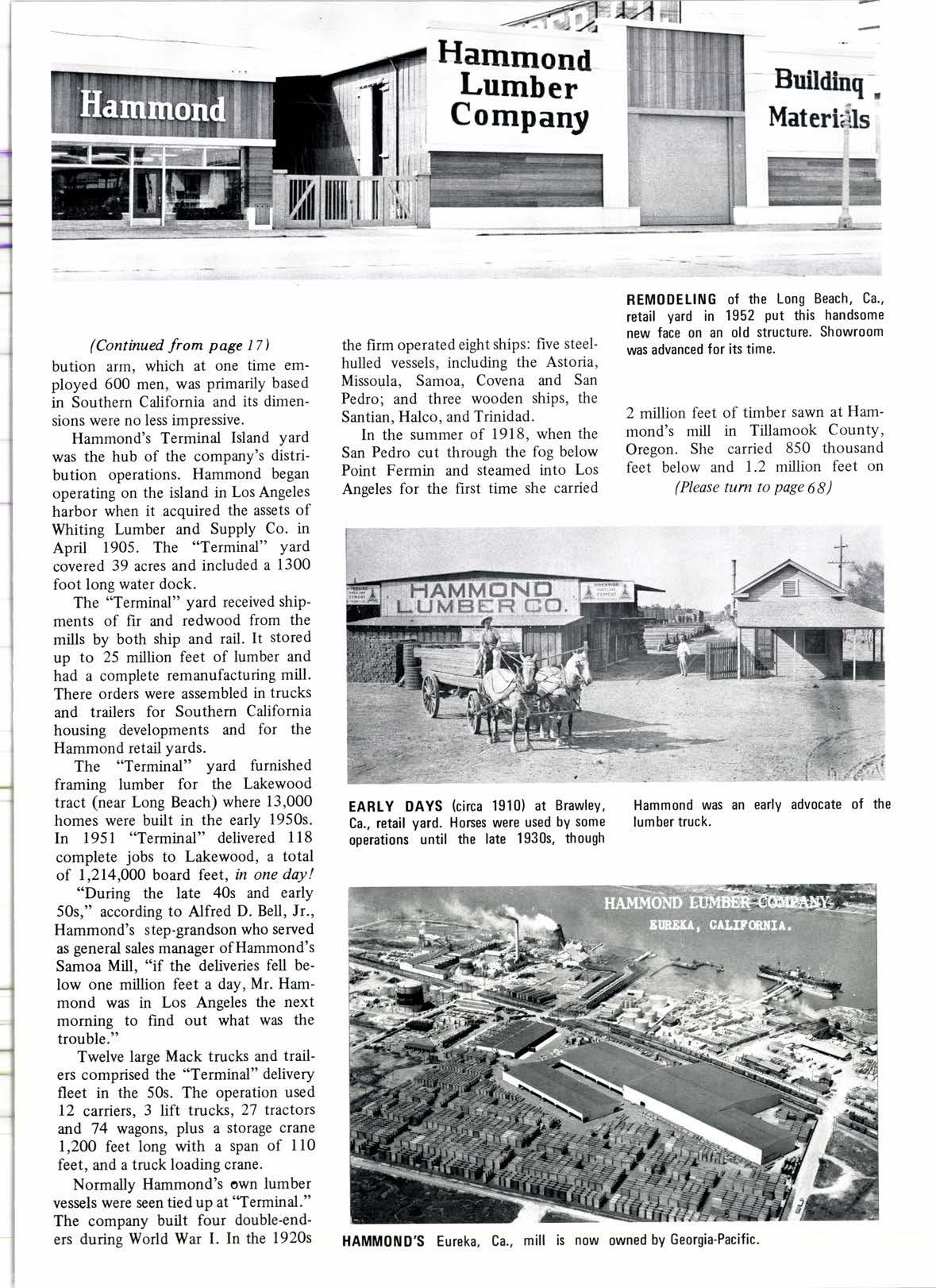
2 minute read
f,edwuod lumbq lrom $imp$on...
A natulalsellelin'78.
To-incnaso your salos ouen nioro ask youl $immon saloiman hl'ads llke lhls...
Simpson redwood lumber is the naturally perfect building material. So don't be surprised when your customers keep asking for more in 1978. Architects and builders have discovered redwood's natural beauty and design latitude. And do-it-vourselfers have found that redwood's durability makes it the perfect building material for decks, fences, planter boxes and other yard and garden needs.
Simpson redwood lumber is available in a wide range of patterns, grades and sizes, tooso you can answer a variety of your customers' needs -whether it's an order for redwood 2 x 4's to build a fence or Ruf-Sawn V-joint Tongue and Groove redwood for siding a new townhouse comolex.
lnd a conlractor il you wanl one Socomeonrn Theprcesarerqhl Thetmersrght And SrmOson redwood couldn I be more beautlur
Dcebr prlcr llrt;
DEALER SICNATURE
So, if you'd like a chance to increase your profits in 1978, look to the natural seller- Simpson redwood lumber from Simpson Building Supply Company. Give us a call today.
5impson
SIMPSON BUILDING SUPPLY COMPANY
Headquarters-900 Fourth Avenue, Seattle, Wa 98164, Phone 206-292-505i.
WESTERN DISTRIBUTION CENTERS: ARCATA, California 95521, Drawer HH, Phone 707-822-0371. CERRITOS. California 90701, 14141 Arbor Place, Phone 213-926-6619 or714-521-8610. SANTA CLARA, Catifornia 9b0b0, 500 Mathew St., Phone 408-985-291'1. KIRKLAND, Washington 98033, P.O. Box 500, phone 206-622-0320 or 26-822-6041. SHELTON, Washington 98b84, p.O. Box 698, phone 26-426-267i.
(Continued from page 17) bution arm, which at one time employed 600 men, was primarily based in Southern California and its dimensions were no less impressive.
Hammond's Terminal Island yard was the hub of the company's distri' bution operations. Hammond began operating on the island in Los Angeles harbor when it acquired the assets of Whiting Lumber and Supply Co. in April 1905. The "Terminal" yard covered 39 acres and included a 1300 foot long water dock.
The "Terminal" yard received shipments of fir and redwood from the mills by both ship and rail. It stored up to 25 million feet of lumber and had a complete remanufacturing mill. There orders were assembled in trucks and trailers for Southem California housing developments and for the Hammond retail yards.
The "Terminal" yard furnished framing lumber for the Lakewood tract (near Long Beach) where 13,000 homes were built in the early 1950s. In 195 I "Terminal" delivered I l8 complete jobs to Lakewood, a total of 1,214,000 board feet, in one day!
"During the late 40s and early 50s," according to Alfred D. Bell, Jr., Hammond's step-grandson who served as general sales manager of Hammond's Samoa Mill, "if the deliveries fell below one million feet a day, Mr. Hammond wu in Los Angeles the next morning to find out what was the trouble."
Twelve large Mack trucks and trailers comprised the "Terminal" delivery fleet in the 50s. The operation used 12 carriers, 3 lift trucks,21 tractors and 74 wagons, plus a storage crane 1,200 feet long with a span of 110 feet, and a truck loading crane.
Normally Hammond's own lumber vessels were seen tied up at'oTerminal." The company built four double-end' ers during World War I. In the 1920s the firm operated eight ships: five steelhulled vessels, including the Astoria, Missoula, Samoa, Covena and San Pedro; and three wooden ships, the Santian, Halco, and Trinidad.
In the summer of 1918. when the San Pedro cut through the fog below Point Fermin and steamed into Los Angeles for the first time she carried
REMODEtItUG of the Long Beach, Ca., retail yard in 1952 put this handsome new face on an old structure. Showroom was advanced for its time.
2 million feet of timber sawn at Hammond's mill in Tillamook CountY, Oregon. She carried 850 thousand feet below and 1.2 million feet on (Please tum to page 68)











